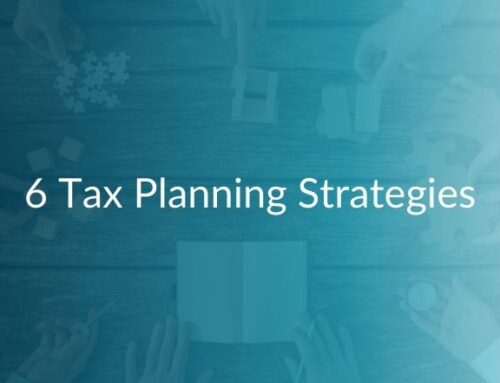Growing a profitable business requires you to leverage your data, cut through the noise, see the summit and navigate the right path to it.
The finance team sits at the intersection of all of this information. Therefore, they should be relied upon to provide the right information and insights to grow revenue and drive profitability. Unfortunately, it is too rare receive the right information at the right time to drive results.
Too often management is receiving financial information either too late or in a format that doesn’t help them predict the future and drive decision making based on those predictions.
What’s causing this gap?
Although there are several contributing factors, the one that is easily changed are your financial statements. These austere reports often contain too much information and the table format limits the ability to:
-
Spot trends
-
Analyze ratios
-
Focus on only the most critical information
Dashboards and the right key performance indicators (KPIs) are invaluable.
Combining you’re financial, and some non-financial information can have a transformative effect on your business.
You’ll spot trends, problems, and opportunities that would otherwise go unnoticed. Best of all, once you land on the right dashboard and KPIs it doesn’t increase your ongoing cost or involvement in accounting.
We’ve seen how dashboards and the right KPIs have driven strategic decision making.
11% increase in project profitability via better information…
A dev studio was trying to track project status by pulling information from a slew of disparate sources—Trello boards, timesheets, monthly financial statements.
Long story short, accounting and finance teams were trying to pull together too much information.
By the time everything was reviewed it was too late in a project to make meaningful corrections and their profit margins were already killed.
By integrating their timesheets, project management tool and accounting system into one graphic report, they were easily able to see team utilization, project status and budget vs. actual on a nearly real-time basis.
These changes allowed the account team to be more proactive when requesting change orders or working through critical path items.
Let’s raise another $1.5MM instead of going cash flow positive…
A SaaS company has maintained a relatively lean sales team and seen steady, but not knock out, sales performance.
Their original plan was to raise a small round from existing investors and maintain the existing cap table. However, it turned out they are likely leaving revenue on the table and reducing their future exit price.
We started pulling information from their CRM and their accounting system to so they could track their customer acquisition cost to lifetime value (CAC:LTV) ratio. What quickly became clear is that their ratio was extremely high—implying that there was additional demand for their product.
They realized they could grow much faster.
As a result, they’re in the process of expanding their upcoming round goals so they can expand their sales team.
Expanding sales is a common tactic, but now they have the data to support this decision and show investors how additional hires will likely impact future revenue growth.
This decision was visualized for them when presented in one clear and concise channel. Visibility into their business drove meaningful change.
Just because you have a dashboard doesn’t mean it’s moving your business forward:
Many owners and CEOs realize that they need to move from financial statements to a financial & non-financial dashboard. However, even if they’ve already put together a dashboard we often find major limitations.
Common issues with a dashboard are:
-
Displaying too much information
-
Displaying the wrong information
-
Creating irrelevant ratios and metrics
-
Not thinking through the order of those metrics
-
Having a process that is too manual and therefore viewing outdated information
The goal of your financial dashboard isn’t to tell the whole story of an organization, but instead, convey the most important information in the least amount of time.
How can you execute on this?
It’s critical that most information in your dashboard flow so that there is little effort required to update it. Truly critical aspects should be updated nearly in real time. Truthfully, this is easier for large companies to execute with fully integrated systems and the people to maintain and manage the data.
However, smaller companies can execute on this by:
-
Gathering information that flows from various sources vs. performing manual adjustments
-
Simplifying assumptions for how to assign costs to projects, overhead or between departments
-
Creating a financial and operational environment that is easy for a small team to operate and integrate.
Metrics vary by industry…
There are common metrics that all industries track—revenue, net income, sales pipeline, A/R balances, payroll expenses.
However, these are typically not the items that are most relevant.
For agencies we find it critical to track the following areas:
-
Project progress (g., earned revenue) vs. costs consumed (team time + hard costs)
-
FTE utilization—or revenue to comp ratio for smaller agencies
-
Controllable margins at an agency-wide level
-
Revenue breakdown by—collection, billing, bookings, earned
Whereas SaaS companies often need to focus on:
-
CAC:LTV
-
# of users/customers/ other base units of measurement
-
Gross/net burn rate
-
Months of cash
-
Product roadmap progress
-
Overall sales/marketing spend
Regardless of the specific metric used to track these areas, it is critical to identify the true drivers of your business, measure them appropriately and display the right data on a dashboard.
A thoughtful dashboard will allow you to spot trends that would otherwise go unnoticed.
Once you’re able to spot trends, you can then go back to financial statements and the books to figure out what’s behind the trend.
If you’re struggling with how to display your information, what information to track or how to structure your backend processes check us out and how we work at Richtr Financial Studio or drop me a line at jamesg@richtr.io.







